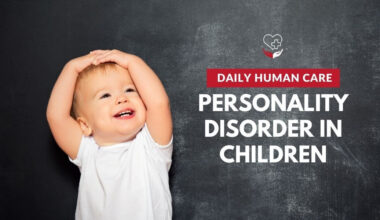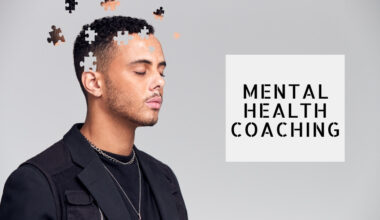Hello Everyone! Do you know about attachment theory and reactive attachment disorder in teens? If not then Daily Human Care is going to discuss it. Enjoy!
Table of Contents
What Is Attachment Theory?
The theory of attachment includes how you form personal and emotional connections with others. Psychologist John Bowlby developed the hypothesis while researching why babies were so distressed when separated from a parent.
To take care of their basic needs, babies need a parent or another caregiver. Bowlby learned they used what he called attachment behaviors to avoid separation or to locate a missing parent, such as weeping, looking, and holding on to their parent. The study of attachment in children by Bowlby laid the groundwork for subsequent studies in adults on attachment.
You develop your style of attachment as you age, primarily based on the attachment patterns you learned as a child. As an adult, this type of attachment can have a major effect on how you shape relationships.
Attachment Disorders:
Attachment disorder is a general term designed to characterize mood, actions, and social relationship problems resulting from the unavailability of normal socializing treatment and primary care attention in early childhood giving figures. Such a failure would result from unusual early experiences of neglect, violence, sudden separation between three months and three years of age from caregivers, regular change or a disproportionate number of caregivers, or lack of responsiveness of caregivers to communicative attempts by children, resulting in a lack of basic confidence.
The attachment style of an individual is permanently formed before the age of three. A difficult history of social interactions that develop after about age three may be distressing for a child but does not contribute to attachment disorder.
The word attachment disorder can be used to describe teenagers’ emotional and behavioral issues, and also refers to school-age children, teens, and adults. The particular problems implied depend on the age of the individual being tested, and the attachment-related activities of a child can be somewhat different with one familiar adult than with another, indicating that the condition is not a feature of one or the other personality within the relationship and experiences of the two individuals.
Types:
There are two types of attachment disorder
- RAD or Reactive Attachment Disorder
- DSED or Disinhibited Social Engagement Disorder.
Disinhibited Social Engagement Disorder (DSED)
When meeting anyone for the first time children with DSED may not seem fearful. They can be overly polite, walk to converse with strangers, or even hug them. Younger kids can allow strangers to pick them up, feed them, or play with toys for them. They do not consult with their parents or guardians when these kids are put in an odd situation, and will always go with someone they do not know.
Disorder of Reactive Attachment (RAD)
Reactive attachment disorder, shortly known as RAD, is a disorder diagnosed until the age of 5 that occurs in early childhood. It happens when a child has extreme emotional abuse and can be caused by several parental or caregiver problems. Although the condition takes hold during early childhood, during childhood, adolescence, and even adulthood, it may affect a person.

If you know a teenager with reactive attachment disorder, To understand more about the situation, how it might influence the teenager, and what to anticipate, Then read on.
Who Is Likely To Suffer From RAD?
RAD in teens is the most prevalent among teenagers who have undergone emotional or physical abuse or violence between the ages of 9 months and 5 years. Just not as popular, older children may also have RAD because other behavioral or emotional issues can also be misdiagnosed as RAD. Children will have a greater chance of developing RAD if they:
- Have had several distinct providers of foster care or spent time at an orphanage
- Were stripped away from legal guardians after a stable bond was formed
- Early in life, they had several devastating defeats.
Indications And Symptoms Of Attachment Dysfunction Reactive
Common signs and symptoms of reactive attachment disorders in teens involve:
An addiction to physical intimacy and interaction. When stimulated, children with RAD sometimes raise an eyebrow, laugh, or perhaps even utter ‘ouch’. Touch and intimacy are viewed as a threat instead of creating pleasant feelings.
Power issues. To stay in charge and stop feeling powerless, most adolescents with reactive attachment disorder go to incredible lengths.
Rage concerns. Frustration may be conveyed directly, or by deceptive, detached behavior, in outbursts or behaving out. In socially reasonable conduct, children with RAD can mask their frustration, such as giving a high five that hurts or embracing someone too tightly.
Trouble expressing sincere love and concern. Kids with reactive attachment disorder, for instance, can be extremely friendly with outsiders while exhibiting little to no appreciation for the family.
A morality dysfunctional. Children with reactive attachment disorder can behave like they do not have morality and then after acting badly, fail to express shame, sorrow, or empathy.
How Reactive Attachment Disorder In Teens Influences Them:
Although reactive attachment disorder in children starts before 5 years of age and is identified, its effects continue for several years. Reactive attachment disorder in teens also finds it difficult to communicate with their parents, their mates, and intimate partners. They also detach from other people and avoid them. They are more likely to want to be alone until they encounter bitter attitudes and would typically not even want to include someone or express their experiences with them. They also lack fundamental social skills and don’t know how to teach others compassion. In all public contexts, also in the school or wherever in which they are a member of a family, they could feel uneasy and not at peace.
Therapies For Teens With Reactive Attachment Disorder:
RAD counseling focuses on rehabilitation for both the teen and his or her existing guardians. Parents may also require parenting lessons to help them learn how to relate and interact with their teenager whether the teen lives with his or her parents. These adults may also need support whether the teen lives with other members of the family, biological parents, or foster parents, as they learn how to help the teen build experience and build social skills. Cognitive-behavioral therapy is a must for teens so that they can learn how to deal with adverse emotions and interact effectively with others.
For the concurrent condition, Reactive attachment disorder in teens along with drug abuse or an underlying mental disability may still need to have medication. For example, intensive outpatient recovery for alcohol or opioid abuse or some form of treatment or prescription for anxiety, depression, or post-traumatic stress disorder may be appropriate for a teenager with teenage reactive attachment disorder. To ensure that the practitioner understands what problems impact the teenager, a full assessment is important so that a correct diagnosis can be developed.
It can be hard for parents to recognize and deal with the actions of a teenager who has a teenage reactive attachment disorder, so interpersonal therapy can be effective for the individuals involved. Your teen will get through his or her tough start with love and commitment will go on to have a satisfying life filled with relationships with parents, mates, and even intimate partners. Speak to the pediatrician or family doctor of your teenager about treatment options for reactive attachment disorder. He or she may recommend an effective strategic health professional to your relatives.
This Is Why Teenagers With Reactive Attachment Disorders Are Not Normal Teenagers,
- The brain is affected by early trauma. While Reactive attachment disorder in teens may look like other adolescent’s exterior, they have many youngest brains. That’s as there were no chances for adolescents who’d been neglected and abused even before 5 years of age to encounter healthy early childhood growth. Thus in the developmental phase of a child, they get trapped. Their suffering doesn’t “surpass” them. Teenagers with RAD are far less stable than their friends, mentally and emotionally. As a kid, without foresight, they can take or do what they want at the time.
- Healthy commitment leads to healthy guilt. From moment to time, all teenagers test limitations. How they feel about their bad decisions is the distinction between linked teenagers and those with RAD. Linked teenagers have the opportunity, on their behalf, to feel bad and modify conduct. Without consideration for others, teens with RAD will keep making bad choices.
- For reactive attachment disorder in teens, social influence is more strong. For adolescents, it’s natural to put more effort into peers when they get aged. Such factors, however, have a different impact on adolescents than those with RAD. Teenagers who are connected have reverence for their families. They may still find some time for family even though they spend more time with friends. Reactive attachment disorder in teens have little to no connection to their family without any delay will obey their friends.
- RAD teenagers have unusual interpersonal relationships. Most related teens learn to manage interactions elsewhere in their families effectively. However, as a result of continuous violence and abuse, teenagers with RAD seek control at all costs to feel healthy. Both their experiences, as well as with friends, can compete with this. Their peer groups are therefore frequently short-lived or indifferent.
- Reactive attachment disorder in teens urgently wants to be linked to others rather than have reciprocal relationships based on their conditions. They may also develop relationships that are emotionally and physically unacceptable. They may become obsessed with interactions. The only way they feel as if another individual cares about them might be through intimate activities.
Also read, Reactive Attachment Disorders in Adults.



